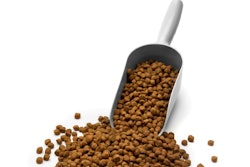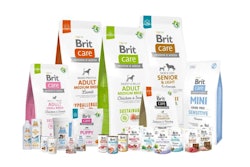
Grain-free pet foods first hit the market more than 20 years ago, likely inspired by no- and low-carb diets in human food; this was also about the time that humanization of pets was starting to take off. Never mind that there was no research then (and there still isn’t) showing that the ingredients removed from pet foods labeled as grain free—such as corn, wheat and soy—did not benefit pets nutritionally or otherwise. Or that grain-free products did confer any particular benefits.
As Greg Aldrich, Ph.D., former Ingredient Issues columnist (and now chief operations officer with Nulo Pet Food), wrote in 2018, the grain-free category essentially began as a marketing message. And the message did its job: The category really gained traction in the later 2000s and early 2010s and, by mid-2018, comprised 25% of the U.S. pet food market.
We all know what happened then: The Center for Veterinary Medicine (CVM), the animal division of the Food and Drug Administration (FDA), issued its infamous warning letter putatively linking grain-free pet foods to a wave of cases of canine dilated cardiomyopathy (DCM) that, on the surface, did not seem tied to typical breed/genetic causes for the condition. Never mind, again, that there was no research or evidence then establishing the link to grain-free products (and there still isn’t).
Research starting to fill in pet diet-DCM gaps
This post is not intended to rehash the entire sad, sordid saga of FDA’s DCM-grain free investigation. (I did that earlier this year, commenting that the probe began with a roar and ended with a whimper.) Rather, I see the DCM imbroglio as a quintessential example of how the lack of comprehensive, published research in many areas of pet food hurts everyone—not just the industry but also regulators, veterinarians, retailers, pet owners and, mostly, our pets.
Fortunately, new studies since 2018 have begun to fill in some of the research gaps, including around grain-free diets and DCM. For example, the University of Guelph just released research on pulse ingredients commonly used in grain-free pet foods, such as lentils, beans and field peas, proving (among other findings) that healthy dogs fed diets containing up to 45% whole pulse ingredients and no grains over 20 weeks showed no indications of heart issues.
This built on research previously conducted by the lead author, Pawanpreet Singh, a Ph.D. student in animal biosciences at the university, who presented that stage of the study in early 2022 at the American Feed Industry Association’s (AFIA) annual conference. At AFIA’s 2023 conference, Elise Bokshowan, a graduate student at the University of Saskatchewan, presented results of her study on the link between oligosaccharides, soluble fibers common in legumes like peas, and diet-related heart failure in Beagles. Like Singh, she found such a link does not exist.
These are just a handful of similar studies that have occurred since the DCM investigation was announced.
Having science in place before following a trend
I’m heartened by all this research, not only the results but also the fact that it’s even happening, while pointing the way to more studies to come. But I think many researchers and other pet food professionals may share my lament that these studies—and even all the pet food research in other areas done over decades to date—are just a drop in the bucket compared to what we still don’t know about pet nutrition and other pet food-related matters. There is still so much research needing to be conducted and published for all to benefit from.
Imagine if another DCM-like situation were to arise, and there was already publicly available research to help address some of the claims and concerns that might arise—or at least to help pinpoint where to focus new studies to get to the crux of the matter. Perhaps in that scenario, CVM officials and some groups of veterinarians would not rush to demonize an entire category of products; or the industry could more quickly respond with sound, proven science to head off that type of reaction.
I certainly don’t blame pet food brands and manufacturers for jumping on the grain-free bandwagon back in the day; they were responding to consumer demand and reaped the benefits of that response, while millions of pets ate those diets with absolutely no problems (including my own cats). But the DCM situation offers a cautionary tale about having research in place before leading with marketing and interpreting the latest human food trend for pet food—something consumers need to understand, too. As one pet food expert has repeatedly said, dogs and cats are not small humans.
















